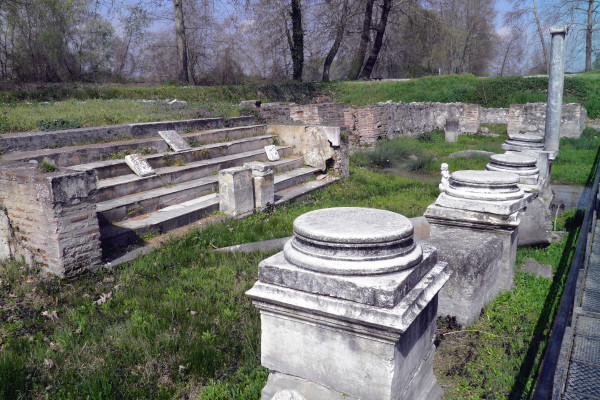Dion is one of the oldest ancient cities and one of the most famous and significant of the Macedonia region. It was founded by Peraivos people of Thessaly and was built at the foot of Mount Olympus in honor of Zeus, while its distance from the city of Katerini is nearly 17 kilometers.
The contemporary village that located almost on the ruins of the ancient city has approximately 1.336 inhabitants and until 1961 was called as "Malathria" due to the plant fennel plant (= maratho / malathro in Greek) that thrived then in the area. The inhabitants of today's village are a mixture of Vlachs with origin from Kokkiniplo of Thessaly and Sarakatsani with origins from Syrakko of Epirus.
Philip the II of Macedonia and his son Alexander the Great considered the town very significant for the kingdom. Philip II had made tributes in the local temples after his victories at Olynthus and Chaeronea. While Alexander began his Asian campaign from here and after his first victory against the Persians at the Battle of Granicus, he sent 25 bronze statues to the city of Dion. Due to its strategic importance, Dion acquired great power on many levels. Among others, the well-known tragic poet Euripides staged at the theater of Dion two of his works "Bacchae" and "Archelaus".
After the conquest of the city, by the Romans, Dion was in a state of semi-autonomy for many centuries. While, when its residents began to embrace Christianity in the 4th century AD it became an episcopacy. During the 14th century, the city conquered by the Turks and destroyed completely. The ruins of the city were covered by dense vegetation until it was rediscovered by the British Colonel and traveler William Martin Leake.
Archaeological excavations have brought to light a great number of relics that belong to temples, buildings, baths, and sanctuaries that are visible by the visitors. Among them the temple of the Egyptian god Isis, Ypolimpidias Aphrodite, and Demeter, the Hellenistic theater of Philip the V, and the villa of Dionysus with its magnificent mosaics. Moreover, among the findings, there are burial grounds, shops, stone columns, as well as conservatories and baths.
The excavation findings and other interesting information about the archaeological site are included in the museum of Dion that is visited by numerous guests on an annual basis. Those guests play an important role and contribute to a great extent to the development of the contemporary village as well.
